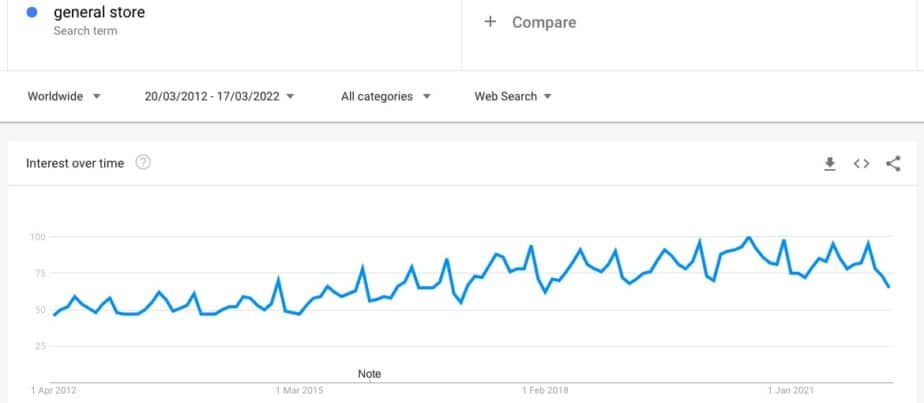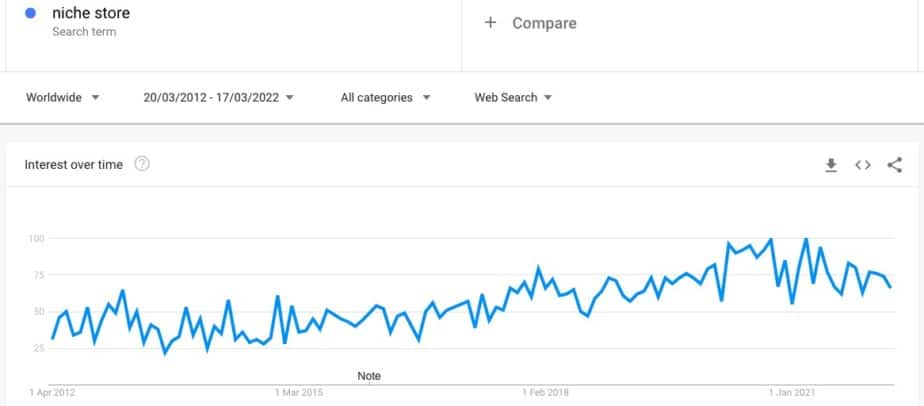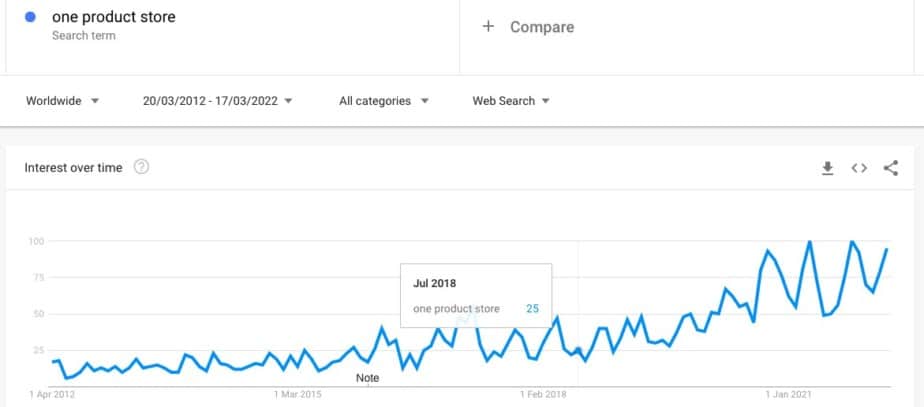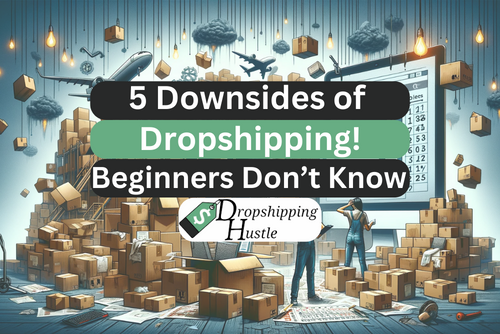A one-product store really is a strange concept, especially for beginners. Can you imagine if you walked into a standard brick and mortar store and they had a single product sitting in the middle of the shop? You’d probably walk out.
By the end of this article, you will understand the important distinctions between store types, the pros and cons of each, what makes each successful and most importantly, which is the best choice for you!
Is it Better to Sell One-Product or Multiple Products?
This is a tough question to answer and there’s no definitive answer, a better question is “which is a better option for me?” It’s like asking if a cat or a dog is better. Both store types can succeed and both can fail, but I’ll break it down for you.
One-product and multiple product stores can both be profitable depending on your needs. The more products you sell the more required in terms of setup, testing and maintenance, however, it also has the potential to make more money. One-product stores are more passive and faster to set up but are more limited in their profitability compared to selling multiple products.
Do One-Product Stores Still Work?
One-product store’s still work in 2023 and I can’t see that ending anytime soon. Many eCommerce store owners are now opting for one product over multiple product stores because they have many advantages.
Even with this, there will always be far more multiple product stores online than one-product stores. The reason for this is only certain products will be successful as a one-product store. You can’t base an entire store around everyday products that have no specific use or uniqueness, such as generic socks or cushions.
However, you could build an entire store around socks if they were unique and had a specific use. A one-product store would be productive if the socks were battery-operated heat socks (Yes they exist!) or kid’s rubber-soled anti-slip socks for example. Feel free to check out my article on some ideas for your own one-product store.
With multiple product stores, you can sell anything and everything and still be profitable. As long as online retailers can source unique products that consumers want, one-product stores still work and are here to stay.
My Related Articles I Think You’ll Love:
What is a One-Product Store & Why they Work!
400+ High Ticket Product Ideas to Sell Online
How to Start a Dropshipping Store – Step by Step
Selling Multiple Products – Niche or General?
When it comes to selling multiple products you have two main options; a niche or a general store. General stores sell products from multiple categories whilst niche stores sell products within a specific category.
General stores often focus on selling trending products. Because they are not tied to any niche, you have the luxury of selling any current trending product as soon as it starts to become popular.
With niche stores, you are forced to sell within your niche even if you find a product you believe has the potential to sell well. If you have a store selling kid’s toys, it will look very out of place to sell some new kitchen gadget that is trending.
General stores require more ongoing work than other store types. This is because they require you to be constantly on the lookout for new trending products which you need to run ads for and optimize. If you’re looking for a passive income stream, general stores are not a smart option.
Although niche stores are less work than general stores when they are up and running, they are still more work than a one-product store. Check out my article on the three main eCommerce store types people tend to use for more information.
Click here for a FREE Shopify trial and 3 months of Shopify for Only $1
Are One-Product Stores Still Profitable?
The most profitable one-product stores in the world will never compete with the most profitable niche or general stores. This is simply due to the amount of volume these stores can generate.
This should not be a deterrent as you can still become a multi-millionaire by creating a successful one-product store. You only need a tiny percentage of people to purchase your product to succeed.
If you had a one-product store and sold to the US market alone, if only 0.1% of the market was interested in your product, that is still 330,000 potential customers your can target. When you consider many online retailers have multiple one-product stores, this makes them extremely lucrative.
You only need to find tiny gaps in the market to make a lot of money. With one-product stores being quick and inexpensive to set up, you can afford to have a lot of attempts until you find success.
A perfect example of a profitable store is Blend Jet, which has built a one-product branded store around a portable blender. With large profit margins and almost a million monthly visits, Blend Jet demonstrates what is possible with a single product.
If you’re interested in seeing my top picks for one-product stores, check out my article where I show you why these stores are so successful.
Are One-Product or Multiple Product Stores More Popular?
Below I’ve provided the demand for each store type over the past 10 years worldwide using Google trends. With eCommerce growing exponentially since 2012 it’s not a huge surprise to see an increase in search volume.
Sometimes these search terms can be a little misleading. For example, many people would have mostly been using the search term “general store” without referring to online stores which is why the search volume has stayed relatively stable.
The term “niche store” has the kind of trajectory you would expect. It has a similar trajectory to how eCommerce has grown over the last 10 years.
The term “one-product store” has by far seen the largest increase in demand. The fact that it really gained momentum around 2018 and has only continued to rise is evidence that they are working and here to stay.



Advantages of a Multiple Product Store
- A store selling 100 products always has the potential to make more than a store with one product, it’s a simple numbers game.
- If 95% of your products fail, you can still succeed. You only need 5% of your products to sell well to have a lucrative store.
- Potential for larger audience size.
- Selling multiple products is an effective way of testing products to validate their potential before building a one-product store.
- You can sell any product as soon as it becomes viral.
- Much more potential for multiple purchases, upsells, cross-sells and returning customers.
- No branding knowledge is required.
Disadvantages of a Multiple Product Store
- More time is required to set up the number of products you need to add to the store.
- Profit margins for general stores are much lower as products are unbranded.
- A larger audience also means it can be more difficult to target a specific audience with the same interest.
- Not as passive. It requires far more ongoing work to run a store with multiple products.
- More products also mean more potential problems can arise.
Advantages of a One-Product Store
- Faster to set up.
- Usually, only one supplier to collaborate with.
- Profit margins can be higher as branded products have a larger perception of value.
- Ability to order the product in bulk and ship domestically. (This is not always possible when you’re selling multiple products.)
- More negotiating power with your supplier due to selling a high volume of a single product.
- SEO is easier to rank for with a specific product.
- The conversion rate is usually higher once the store is established and optimized.
- For more advantages, I suggest you read my article where I list the 10 main reasons why it’s better to sell one product.
Disadvantages of a One-Product Store
- Higher failure rate in the beginning stages more often than if selling multiple products.
- With a single product, you are putting all your eggs in one basket.
- Smaller audience size.
- One-product stores need to be branded to be successful.
- Less potential for repeat business and upsells.
- The average order value is often lower.
One-Product vs Multiple Products – Which is Best for You?
You might be reading this article because you’ve heard how good one-product stores are from many YouTubers and want to know which is the best choice for you. You need to ask yourself a few questions first.
- Are you a complete beginner?
- Have you got any knowledge of branding?
- Have you created an eCommerce store before?
- Are you looking for a more passive income stream?
- Have you got any experience with creating ads?
As an amateur, a multiple product store is the easier option. By this I mean you can afford to make mistakes with your store and still have sales.
Niche stores do require some branding knowledge as you are targeting a specific audience of buyers therefore a store needs to be themed towards this audience.
With a general store, your audience is everyone and therefore as long as the store looks professional, it doesn’t need to feel branded to a specific audience. It is also a great way of learning the ropes of running ads. You can try multiple ad types and various platforms for the different types of products you’re selling. This will give you an idea as to what works and what doesn’t.
With a one-product store, you can only run a single test at a time. It may take a lot of time to find the best advertising route for your product or you may be testing for weeks before realizing the product just is not working.
The best option is to sell multiple products, find which product is performing best and then transition into a one-product store. This way you have validated the product before going to all the trouble of building a one-product store based on a hunch.
Don’t presume you know what will sell and the best way to sell it without testing first. Even the best online retailers in the world still regularly fail.
For more guidance on dropshipping be sure to navigate through my website, dropshippinghustle.com and check out my free tutorials and guides.





Leave a Reply